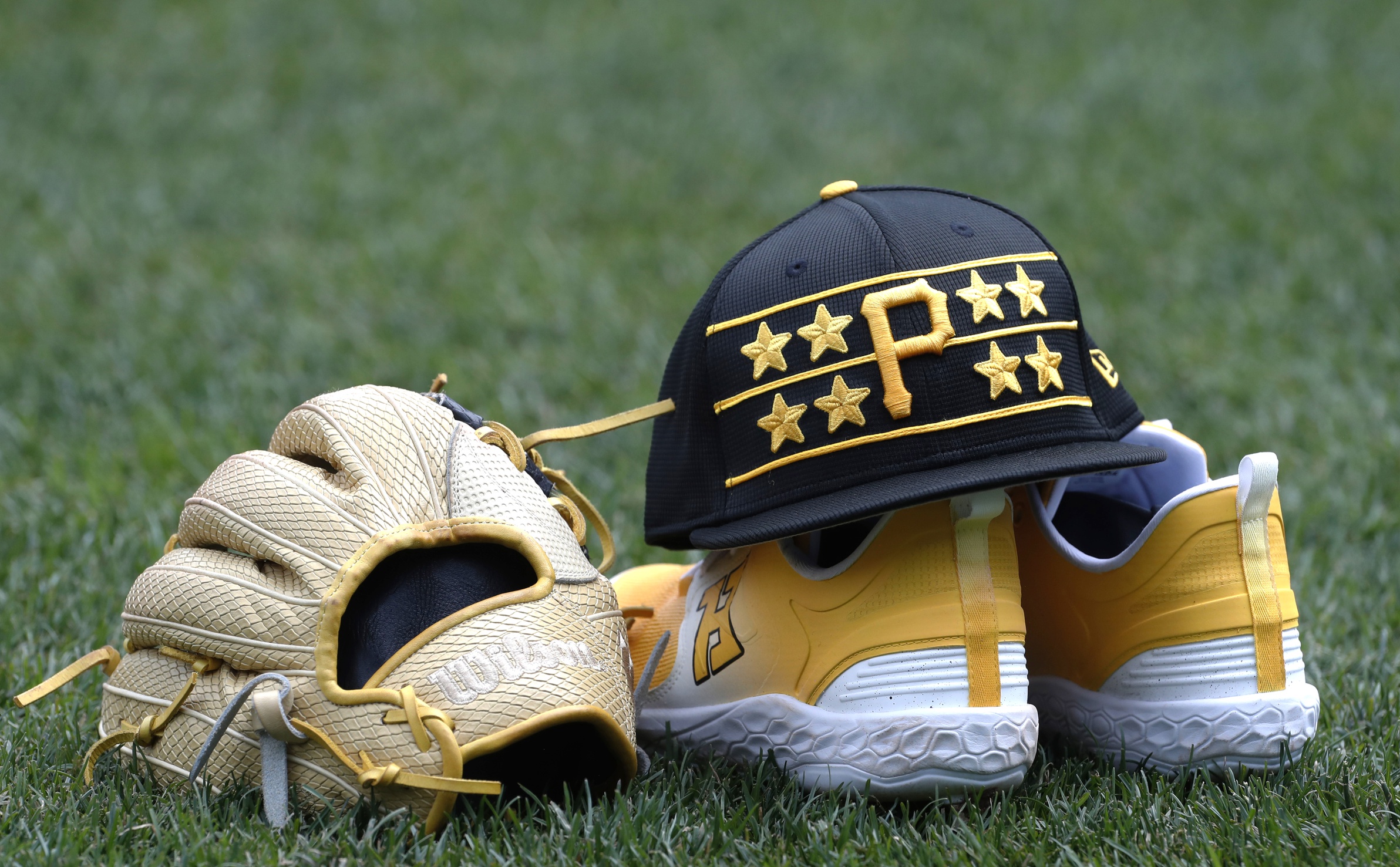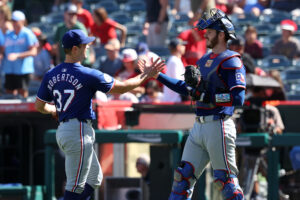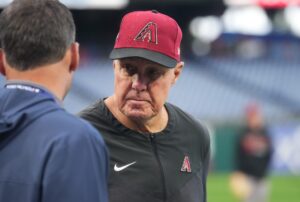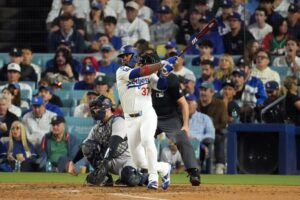Manny Sanguillén will be inducted into the Pittsburgh Pirates Hall of Fame with Barry Bonds and Jim Leyland on Saturday. Leyland was also inducted into the Baseball Hall of Fame in July. The candidacy of Bonds, Major League Baseball’s all-time home run leader, remains controversial. In his heyday, Sanguillén was considered the second-best catcher in baseball, behind Johnny Bench. Sanguillén was never seriously considered for the Baseball Hall of Fame. Yet, he means more to Pittsburgh than either Bonds or Leyland.
It is finally sinking in. I’m in the @Pirates #HallOfFame!! I’m blessed to be a part of Pittsburgh and the Pirates. Thank you for embracing me & my family. God bless you and I love you. 🙏🏾⚾️🙏🏾
— Manny Sanguillen (@TheRealSangy35) May 24, 2024
Remembering Manny Sanguillén, Pirates Hall of Fame Inductee
Bonds won two National League Most Valuable Player Awards as a Pirate and led the team to three consecutive East Division titles. But he couldn’t shut up about his desire to leave Pittsburgh for California once he became a free agent. Leyland also left the Pirates after the 1996 season when owner Kevin McClatchy announced cuts in the payroll. Sanguillén left the Pirates for one year, not of his own volition. In November 1976, he was traded to the Oakland Athletics for manager Chuck Tanner. The Pirates reacquired him from Oakland late in spring training in 1978 for Miguel Diloné, Mike Edwards, and Elias Sosa. Now 80 years old, he’s still around PNC Park, behind the counter at Manny’s BBQ under the left-center field stands, smiling, talking to fans, and signing autographs from a wheelchair, sometimes with large ice packs on his knees.
In his 12 years (1967, 1969-76, 1978-80) with the Pirates, Sanguillén hit .299/.329/.403, 59 HR, 527 RBI, and 105 OPS+, and was a three-time All-Star. He threw out 39 percent of would-be base stealers. His ever-present smile radiated the joy he felt playing the game. A notorious bad-ball hitter, he averaged just 25 walks per 162 games for his career. Always tough to strike out, his “K” rate was just 6.2 percent for his career. For a catcher, he was a fast runner but too often an overly aggressive baserunner. There was a joke around Pittsburgh that he’d keep running until he either scored or was thrown out.
Beginnings
Sanguillén was born in Colon, Panama (pronounced like Bartolo Colon, not like your large intestine). As a teenager, he was an amateur boxer, a vocation his mother wasn’t too crazy about. In 1964, Pirates scout Herb Raybourne discovered a late-teen Sanguillén playing right field on his father’s softball team, of all things, and immediately projected him as a major-league catcher. The Houston Astros swooped in and invited Sanguillén to a tryout camp. The Pirates won the Sanguillén sweepstakes by countering with a $500 offer. He’d never played baseball before.
A “Break” for Sanguillén
After hitting just .235 in 1965, his first year at Single-A Batavia, Sanguillén quickly caught on (no pun intended). In 1966, he jumped from Single-A to Triple-A. Across both levels, he hit .322/.362/.437 and impressed with his catching skills, particularly his ability to throw out runners and catch a knuckle-balling prospect by the name of Wilbur Wood. He earned a promotion to Pittsburgh in 1967 when the Pirates starting catcher, Jerry May, was injured. He hit .271 for the big club and spent 1968 in the minors.
In 1969, Sanguillén and fellow prospects Dave Cash, Dock Ellis, Richie Hebner, Bob Moose, Al Oliver, and Bob Robertson, were called the “Baby Bucs” in the press for the future hope they represented. Sanguillén went north with the Pirates out of spring training, but it was May who began the season as the number one catcher. Sanguillén got his break when May got an unfortunate break of a different kind. On July 14, 1969, May was injured in Montreal’s Jarry Park when he crashed into the dugout while chasing a foul pop. May then injured his shoulder in the ambulance on the way to the hospital. Sanguillén replaced him and never lost the starting job. May had become 1969’s Wally Pipp.
A Champion
The Baby Bucs fulfilled their promise. The Pirates won the division title in 1970 but were eliminated in the League Championship Series by the Cincinnati Reds. Then they won the World Series in 1971 over the Baltimore Orioles. Overshadowed by the MVP performance of Roberto Clemente and the two complete game victories by Steve Blass, Sanguillén was 11-for-29 with two steals in the seven-game Series. On September 1 of that year, he was also part of the first all-minority lineup to take the field.
A Reluctant Right Fielder
With 1972 came heartache. The Pirates lost another NLCS to the Reds thanks to Moose’s wild pitch. Then on New Year’s Eve, Clemente was killed in a plane crash while on a mercy mission to Nicaragua. Sanguillén famously spent days scuba diving off the coast of Puerto Rico in search of his friend’s body.
For the 1973 season, the Pirates front office had the bright idea that Sanguillén should be moved to right field to take Clemente’s place. In 22-year-old Milt May (no relation to Jerry), they thought they had the third-best catcher in baseball. To Bob Smizik of The Pittsburgh Press, Sanguillén recalled an eerie conversation he had with Clemente in November 1972. “Bobby, I’m playing right field,” he jokingly told Clemente. “You better go into left field because I’m going to start the season in right field.” But Sanguillén was never comfortable there. The converted catcher told Smizik, “I don’t take Clemente’s place. He is still right field. He belongs to right field. I feel like I don’t belong to right field. I feel like the spirit of him will always be in right field.”
The experiment was a disaster. Sanguillén committed eight errors in right field, although it’s surprising to look at his statistics today and find that he was also credited with eight Fielding Runs Above Average. The stats geeks were less kind to May. He was charged with -4 Fielding Runs Above Average behind the dish. By June 27, Sanguillén was back behind the plate regularly but for a couple of cameos in the outfield. May was hitting .282 at the time – one point behind Sanguillén – but without the power that was expected of the young left-handed hitter. The 1973 Pirates finished 80-82, ending a string of three consecutive division titles.
Never the Same
Sanguillén wasn’t the same catcher once he returned to the position. Again, the stats belie what the eye saw. He was still throwing out baserunners at a decent rate – 40 percent in 1974, 39 percent in 1976 – but from 1974-76, he was credited with just five net Defensive Runs Saved.
Meanwhile, Sanguillén and the 1974 Pirates were locked in a tight division race with the St. Louis Cardinals. They won the East Division on the final day of the season against the Chicago Cubs at Three Rivers Stadium. The umpires almost forfeited the game to the Cubs. The 22,725 in attendance, perhaps fueled by a bit too much Iron City Beer, were in a nasty mood when Richie Zisk was thrown out at home on a controversial call. Bottles rained down from the stands. A fan in the left field seats threw a bottle at Cubs left fielder José Cardenal. “It was the worst I’ve ever seen a big-league crowd,” umpire Shag Crawford told Smizik. “I am lucky to leave Pittsburgh with my life,” said Cardenal.
Sanguillén was the hero in the bottom of the 10th inning. He came to bat with the bases loaded and one out against Cubs reliever Oscar Zamora. He hit a roller to third base that scored Al Oliver with the division-winning run. The Pirates would lose the NLCS to the Los Angeles Dodgers.
His Best Season, but . . .
Sanguillén had his best season with the bat in 1975. He hit .328/.391/.451, 9 HR, 58 RBI, and 136 OPS+. His 48 walks were by far a career-high. However, in the NLCS, the Reds successfully stole 11 bases in 11 attempts while sweeping the series in three games. Manager Danny Murtaugh considered starting Duffy Dyer in Sanguillén’s place in Game 3 but decided against it. Writing the season’s postmortem in the Pittsburgh Post-Gazette, long-time beat writer Charley Feeney wrote, “There seems to be a movement to absolve Sanguillén for any of the blame for the 11 stolen bases in the three playoff losses. . . Some people have the tendency not to criticize Sanguillén because he is a fine human being. A person can be a fine human being and a bad catcher.”
A Hero, Just for One Day
During the Pirates’ second-place 1976 season, it became clear the Baby Bucs had largely reached their shelf life. Sanguillén’s year with Oakland turned out to be like a year in the Instructional League. Oakland used him at catcher, first base, and right field. When he returned to the Pirates in 1978, Sanguillén became a useful utility player. Tanner mostly used him as a reserve first baseman and pinch hitter.
Sanguillén’s last hurrah came in Game 2 of the 1979 World Series in Baltimore. In the top of the ninth in a 2-2 tie, he was called on to pinch hit with runners on first and second with two outs. He lined an outside pitch from Orioles reliever Don Stanhouse into right field to score Ed Ott from second base. The 3-2 lead held up and the Pirates won the Series in seven games.
“It was probably a ball,” Sanguillén told Dan Donovan of The Pittsburgh Press. Pirates fans who read that quote collectively thought, no kidding! He dedicated the hit to the memory of the great Clemente. “I dedicated this for him, nobody else.” The front page of the Press ran a photo of Sanguillén in a cowboy hat, being greeted by fans when the Pirates landed at the airport to resume the Series at home.
The Last Word
Sanguillén’s role with the Pirates shrank in 1980. They acquired Kurt Bevacqua in an August trade with the San Diego Padres. When pinch-hitting opportunities arose, Tanner was strangely infatuated with Bevacqua and his .163 average. After the season, the Pirates dealt Sanguillén and malcontent Bert Blyleven to the Cleveland Indians for four deservedly forgotten players. Sanguillén chose to retire rather than join the Indians. He remains a beloved figure in Pittsburgh, even among younger fans who never saw him play.
Photo Credit: © Charles LeClaire-USA TODAY Sports






